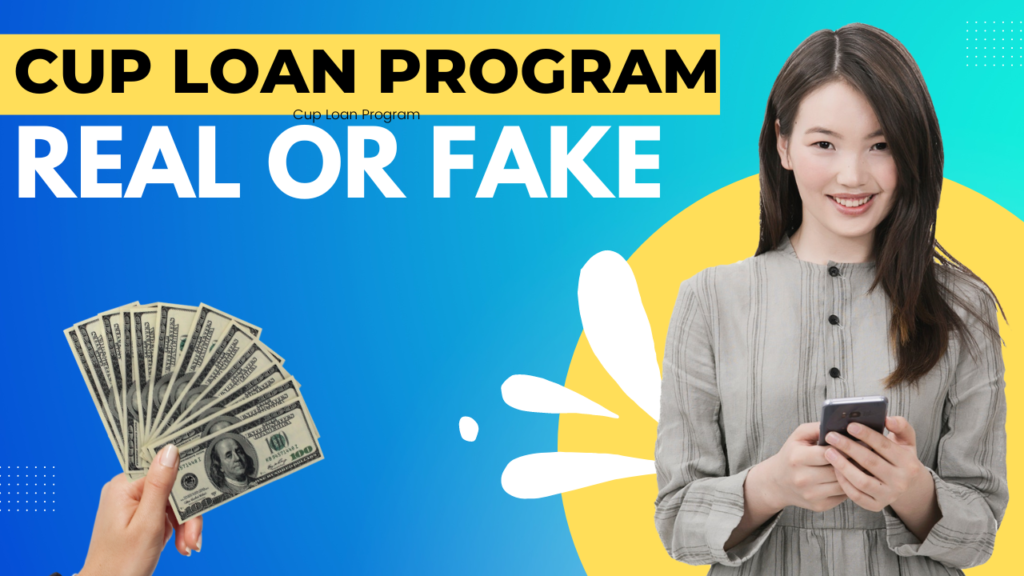Cup Loan Program Real or Fake: This article analyzes the “Cup Loan Program,” a term used for short-term, unsecured loans. We’ll explore its legitimacy, potential benefits, and risks, empowering you to make informed decisions

Table of Contents
Understanding the Cup Loan
There’s no single, universally recognized “Cup Loan Program.” The term “cup loan” seems to be a broad term some lenders use for short-term, unsecured loans with potentially relaxed credit score requirements.
These loans typically range from a few hundred to several thousand dollars to bridge temporary financial gaps.
| Feature | Description |
|---|---|
| Loan Amount | A few hundred dollars to several thousand dollars |
| Purpose | Bridge temporary financial gaps |
| Term | Short-term |
| Credit Check | Potentially relaxed |
Cup Loan Program Real or Fake
Legitimate lenders do offer short-term loans with potentially relaxed credit checks. Established institutions like credit unions and online lenders might offer such products under various names.
However, the lack of a standardized “Cup Loan Program” is a red flag. Be cautious of lenders heavily promoting a program under this specific name, as it could be a marketing ploy to attract borrowers seeking fast and easy money.
Here is how to assess a lender’s legitimacy:
- Licensing: Verify if the lender is licensed in your state by checking the website of your state’s financial regulatory agency.
- Transparency: A reputable lender will disclose loan terms, interest rates, fees, and repayment conditions. Be wary of lenders with vague or hidden details.
- Online Reviews: Read reviews from other borrowers to understand the lender’s customer service and overall experience.
Benefits of Cup Loans
While not without risks, cup loans (when obtained from legitimate lenders) can offer some advantages:
| Benefit | Description |
|---|---|
| Accessibility | Borrowers with bad credit or limited credit history might find traditional loans difficult to obtain. Cup loans could provide an alternative source of funds for unexpected expenses. |
| Speed | The application and approval process for cup loans can be faster than traditional loans, offering quicker access to cash. |
| Smaller Amounts | These loans usually target smaller financial needs, helping manage temporary gaps without accumulating excessive debt. |
Risks to Consider Before Borrowing
Even with legitimate lenders, cup loans come with inherent risks:
| Risk | Description |
|---|---|
| High-Interest Rates | These loans often carry significantly higher interest rates compared to traditional loans. This can make repayment expensive, especially if you struggle to repay within the short term. |
| Debt Trap: | Reliance on cup loans to cover recurring expenses can lead to a debt trap. The high interest can make it challenging to become debt-free. |
| Predatory Lending Practices | Unfortunately, some lenders might exploit borrowers’ financial vulnerabilities. Be cautious of lenders with aggressive tactics, hidden fees, or unfair loan terms. |
Alternatives to Cup Loans
Before resorting to a cup loan, consider exploring safer alternatives:
- Negotiate with Creditors: If facing temporary financial hardship, try contacting creditors to explain your situation and negotiate payment plans.
- Emergency Savings: Building an emergency fund can be a powerful tool. Even a small amount saved can help cover unexpected expenses.
- Credit Counseling: If you’re struggling with debt, consider seeking help from a reputable credit counseling agency. They can guide managing debt and budgeting effectively.
The Bottom Line
While legitimate lenders might offer short-term loans with relaxed credit checks (not necessarily under the “Cup Loan Program” name), these options come with significant risks.
High-interest rates and the potential for a debt trap make them a risky proposition. Always prioritize building an emergency fund and exploring safer alternatives before considering a cup loan.
Building Financial Literacy
The key to navigating the financial world confidently is knowledge. Here are some resources from reputable sources to enhance your financial literacy:
- Consumer Financial Protection Bureau (CFPB): Consumer Financial Protection Bureau provides valuable information on various loan options and responsible borrowing practices.
- National Foundation for Credit Counseling (NFCC): The National Foundation for Credit Counseling offers credit counseling and financial education resources to help manage debt and make informed financial decisions.
Conclusion
By understanding the potential risks and exploring safer alternatives, you can make informed financial choices and avoid the pitfalls associated with cup loans. Remember, responsible borrowing is crucial for building a secure financial future.
